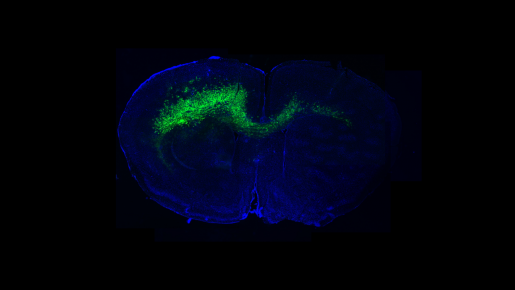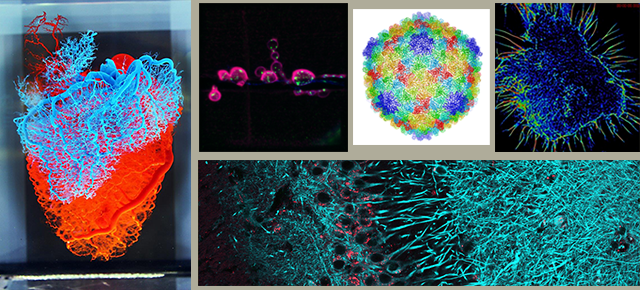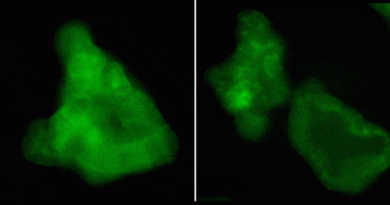Uncovering drivers of glioma-related epilepsy
Glioma is one of the most aggressive malignant primary brain tumors. A common feature of glioma is the presence of localized, intermittent seizures referred to as glioma-related epilepsy, which is known to promote tumor growth. However, the mechanism involved at the molecular level is still not clear.


A team led by researchers at Baylor College of Medicine looked closely into the events leading to glioma-related seizures and reports their novel findings in the journal Neuron.
“Our research involved both human patients and animal models. We started our investigation by analyzing data collected from human patients, then we modeled what we found in animal models and finally we went back to human patients,” said first author Rachel Naomi Curry, a graduate student in Dr. Benjamin Deneen’s lab at Baylor. “In collaboration with Dr. Ganesh Rao, Marc J. Shapiro Professor and Chair of Neurosurgery at Baylor, we applied single-cell RNA sequencing to determine tumor gene expression and analyzed intraoperative recordings of brain activity of human glioma, as well as other techniques.”


The team found that patients who have seizures have increased expression of genes involved in formation of neuronal connections or synapses. As they moved to study these genes in more detail in animal models, the researchers identified one of the genes, IGSF3, as the driver of seizures in glioma.

“In collaboration with Dr. Jeff Noebels, Cullen Trust for Health Care Endowed Chair in Neurogenetics and Director of Blue Bird Circle Developmental Neurogenetics Laboratory at Baylor, we dug deeper to understand the mechanism that leads to seizures. We discovered that IGSF3 disrupts the ability of tumor cells to handle potassium,” Curry said. “Normally, after neurons fire, astrocytes take up potassium in their surrounding environment. But IGSF3 suppresses the ability of these cells to uptake potassium, which leads to its accumulation and then to seizures.”
“Looking into other genes that handle potassium, we found that there is a major loss of these genes in tumor cells of patients that have seizures. This is very specific to these patients,” said Deneen, professor and Dr. Russell J. and Marian K. Blattner Chair of neurosurgery and director of the Center for Cancer Neuroscience at Baylor. He also is the corresponding author of the work.
In addition, the researchers searched for the location where the seizures started in the brain. They discovered that in animal models that have seizures, tumor cells are much closer and more embedded into the neurons than in the models that do not have seizures.
The close interaction between neurons and tumor proliferating cells triggers the seizures,” Curry said.
“Analysis of the brain recordings of patients that had seizures showed that they started where tumor cells were close to and interacted with neurons, confirming the findings in the animal models,” Deneen said.
Our studies reveal that tumor progression and seizures are triggered by disruption of potassium handling.”
“The findings support further studies into novel strategies to control the seizures and tumor growth,” Deneen said.
Other contributors to this work include Isamu Aiba, Jochen Meyer, Brittney Lozzi, Yeunjung Ko, Malcolm F. McDonald, Anna Rosenbaum, Alexis Cervantes, Emet Huang-Hobbs, Carolina Cocito, Jeffrey Peter Greenfield, Ali Jalali, Jay Gavvala, Carrie Mohila and Akdes Serin Harmanci. The authors are affiliated with one of the following institutions: Baylor College of Medicine, Texas Children’s Hospital and Weill Cornell Medicine.
This work was supported by grants from the NIH (R01NS071153, U01CA217842, R01NS124093, R01CA223388, R01NS094615, K08-NS110976, 5T32HL92332-15, F31CA265156 and F99CA274700). Further support was provided by a Dan L Duncan Comprehensive Cancer Center NIH award (P30 CA125123), a CPRIT Core Facility Award (RP210227), an NIH High End Instrument award (S10OD026804), NIH Shared Instrument Grants (S10OD023469, S10OD025240), P30EY002520 and CPRIT grant RP200504.



